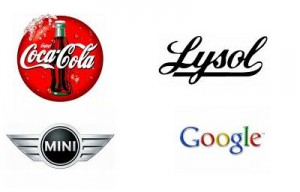Brand Management Basics
Building a brand which will last through thick and thin is one of the most difficult things a company can do. Because brand is not just about quality products, excellent customer service, and how much money you have to advertise, even if you are a successful company, you may not be known as a brand. A brand’s qualities can be physical and are also perceived. It is the perception or value that is hard to develop and maintain.
For a brand to propel itself into daily consciousness, it should reflect several basic traits. It must take on a personality of its own and exhibit qualities of trust, sincerity, authenticity, staying power, mass appeal, uniqueness, and it must have some meaning of importance to its users. All of these qualities are the mark of an excellent brand. The logo alone and fancy advertising will not make the product a brand. So recognizing that growing a brand is more than visual appeal, let’s examine seven brand management basics.
- First and foremost, your brand needs a problem and solution statement much like a mission statement. You need to create a problem and in turn show how your product fixes that problem. Your statement must be well-defined, clear-cut, and you must understand the market to which you make your appeal. If your product is a luxury yacht and you are selling the lifestyle, you are not going to find your customers riding on the bus.
- Your brand must be unique. You cannot appear to copy ideas from other companies. You must be different in appearance, and although you may fix the same problem as another company, your message clearly needs to be your own. Identity is everything when branding.
- You need to understand the importance of being first at something when your brand is new. This is similar to being unique but if you can say you were first at launching a product, your brand will be the one remembered by consumers.
- Everything that is associated with your brand must be consistent. The same slogans, the same tag lines, the same logo, and the artwork in your office. Package recognition is crucial. Everyone needs to be on board and “walk the walk”. There is no room for conflicting or confusing messages. There is only one message to communicate. And you cannot change that message. Take the recent example of Starbucks Coffee®. They were a “yuppie-type” establishment serving expensive coffee. Then, to get a larger market share, they launched an instant coffee. What does this say about their brand and what does it do to the message?
- You need to be credible and sincere. Your target market needs to see that your focus continues and that the brand remains what you said it was. Decreasing quality, changing themes, and gross deviations from the norm will not endear your brand to loyal users. Just think about the “New Coke” debacle and you will instantly understand this basic premise to brand management.
- You must be persistent, continually researching the target market, understanding existing customer preferences, and even monitoring competitor reaction to your product.
- You must be solid when talking about the brand. You must have conviction that it will suit your customers’ purposes and that it is the ideal solution. And you must be willing to put that theory to the test. You must deliver.
Indeed, managing your brand is a huge undertaking but it is essential to long-term branding. Success is found from understanding and committing to brand management basics.
Branding Campaigns Explained
Think about some of the television commercials that quickly come to your mind. Do you remember them because of the products involved or do you remember them because of the messages of the commercials? In most instances, it is because of the commercials. You find the ads to be neat or cool. But they fit the products perfectly. That is the purpose of a branding campaign.  To make the advertisement mean something to you, while at the same time to promote the product or service being sold.
To make the advertisement mean something to you, while at the same time to promote the product or service being sold.
Some of the oldest commercials for investment houses and banks used (and still use today) branding campaigns to push consumer deposits. When trying to get their clients to buy different pension products, the deposit mechanism was second to the lifestyle that the client could enjoy. “Invest your money for thirty years and live like a king when the time comes to retire.” They showed pictures of people lying on beaches in the Caribbean being served fresh fruit and cocktails. The ads portrayed seniors as carefree souls traveling about the world with no worries in sight. The investment was secondary. This is a branding campaign, and it works because people buy into the sales pitch. They imagine themselves on that yacht!
A brilliant example today of a complete branding campaign is Fido cell phones. Most people know that Fido is a dog’s name. And all of the company’s literature, slogans, print ads, website, billboards, and television commercials clearly show a dog. And not just the same dog. They use many breeds because they are making the point that customers are different. Also, by using different dogs, they appeal to a greater number of people. The brand is not associated with one type of dog, therefore, the phone is not stereotyped. Further, the customers are called “Fido Owners”. The logo is the word “fido” sitting beside a yellow doghouse. And when they show someone giving a Fido telephone as a gift, there is no phone in the box, a dog peeks out. Everyone knows you are not giving a dog and that the telephone is the product, but the cell phone is not the focus of the ad. Indeed, this is an excellent example of a branding campaign. Everything ties together in symmetry.
Choosing a Branding Strategy
Indeed a branding strategy is important when marketing your product. You need to have a clear idea of what your brand represents and to whom the brand is most important. One of the earliest decisions that you will have to make is what name to give your brand. In addition to actually choosing your name, you need to decide whether the name should be indicative of the product. That is to say, is the name a description of the item? The other choice would be to brand a term or a word that is completely made up. Apple computers is an example of this strategy because apples, as fruit, have no bearing on computers, nor does the word represent an acronym or abbreviation of anything associated with the computer world.
Additionally, when choosing a branding strategy you need to look at whether you are better to brand the company, the product, or even yourself. If you are a motivational speaker, for instance, branding yourself makes more sense than branding a book you wrote. How you conduct your seminars, as well as your personality are your unique brand.
If you are a large company with many products, you might brand similar items. Baby care products might be one brand while kitchen cleaners may be another separate brand. But, there are examples of companies whose brand covers more than one niche. Ivory® is one such brand. You can buy personal bars of soap, dish washing liquid, and powder laundry detergent. At the outset, you might wonder who would want to buy skin cream from the same company that sells detergent, but the point is the products are all soap. And the brand promotes the fact that the products are “pure”. And that is how consumers know the brand. As you can see there should be something that ties the products together as a brand.
Corporate Branding Explained
Corporate branding is when a company’s logo or products are instantly recognizable. Probably one of the best examples of this is the Coca-Cola® bottle. You can be on any continent of the world, in any country and Coke is there. Their logo, their curved bottle, the red colors, and the name is one everyone knows. What is most incredible is that even very small children ask for Coke. And not only is the drink itself recognizable, but in the US and Canada, their image of Santa Claus is an icon. Their songs and jingles from years ago are still familiar to people. This is what real corporate branding is about.
Further, corporate branding does not have to be one product. It can be several similar products branded under the same umbrella but different from the company name. An example of this are LYSOL® products owned by Reckitt Benckiser.  No-one knows the corporation’s name even though it is a major, international conglomerate. But if a new Lysol product was launched tomorrow, it would gain instant recognition because Lysol has been a trusted brand for generations. It was popular as a bathroom cleaner and when germs became an issue in society, the disinfectant wipes were created. People bought them not because the wipes worked, but because the name Lysol was a familiar household name.
No-one knows the corporation’s name even though it is a major, international conglomerate. But if a new Lysol product was launched tomorrow, it would gain instant recognition because Lysol has been a trusted brand for generations. It was popular as a bathroom cleaner and when germs became an issue in society, the disinfectant wipes were created. People bought them not because the wipes worked, but because the name Lysol was a familiar household name.
Another point that is interesting about corporate branding is that the product does not have to be the focus of the brand. Yes, the product is the key, but the brand may be known for something else. Take a look at this statement from BMW’s website for the MINI brand.
“MINI is part of a lifestyle that is cosmopolitan and confident, ready for everything.” The car is not sold because it is cheaper, it is not sold because it is smaller. On the contrary, its appeal is the lifestyle. The brand epitomizes a specific lifestyle. If it was just an economical car with good gas mileage, it would not be the icon it is.
